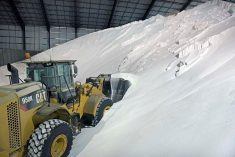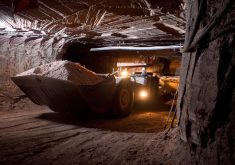Farmers have the honour of being a textbook example of a group of people who inhabit a crucial but seldom discussed (by the public) economic concept: Externalities.
It’s something that could bring or cost farmers lots in the future.
It’s the concept of costs or benefits of something being unrecognized in the price or cost of a product or activity.
Farmers get paid for the agricultural commodities they produce (mostly crops and livestock) and they pay for the inputs (land, machinery, fertilizer, seed, fuel, for example) it takes to produce those commodities. The spread between the two is the profit margin.
Read Also

Pakistan reopens its doors to Canadian canola
Pakistan reopens its doors to Canadian canola after a three-year hiatus.
Simple enough.
But what about all the grasslands and wilderness habitat preserved by grazing cattle and other ruminants upon grassy acres? What about the benefits to downstream residents and users of minimum till farming, 4R fertilizer practices, on-farm water retention systems and other land and water conservation systems many farmers employ?
Farmers aren’t compensated for the good they do for society.
What about downstream pollution and flooding caused by farmers’ unmanaged drainage, overfertilization and excessive tillage, as well as overgrazing ruminants and overapplying manure? Who pays for that environmental damage?
What about carbon emission mitigations and excesses caused by various agricultural systems? Who gets paid, or pays, for those?
Most of the time the answer is nobody.
Outside of small and patchy programs, the indirect benefits and costs of farming to people outside of agriculture are borne by others. That’s a form of market failure. Those are externalities. Farming is rife with them.
That has made pricing agricultural externalities a central concept in today’s agricultural politics, policy and economics. We live in a free-market system and if the prices and costs of things in agriculture aren’t fully recognized in agricultural values, then the farming system isn’t going to work well.
It seemed like everywhere I turned this week, externalities were being discussed.
It was directly discussed in the policy paper Externalities and Canadian Agricultural Policy: Role, Rationale and Results, which I describe in a story on page 15, written by Margaret Zafiriou.
That paper highlights the central importance of externalities to many farm programs and regulations, but also the alarming weakness of our understanding of how to quantify and address those externalities.
How do you make good externalities-based policies when you haven’t got a good grip on what they are?
The topic came up in an interview I did with Greg Northey of Pulse Canada, who has been involved in the nightmare complications of the container crisis that has hammered the special crops industry since the beginning of the pandemic.
Neither of us employed the term “externality,” but that’s what we were talking about when discussing the excruciating delays and costs dumped on growers by the decisions of ocean shipping systems to ignore piled-up prairie crops in favour of sending empty containers back to China, and railways to run their systems as fits them best, regardless of the cost of shortfalls on farmers.
With farmers paying the price for these market failures, and compensation not part of the equation, it’s a clear example of other industries’ externalities falling upon the farmer’s head.
The third immersion in externalities and agriculture for me this week was in reading the book Dinner on Mars, by Evan Fraser and Lenore Newman. It’s an entertaining thought-experiment about how to design a food system for a future colony on Mars, a place so far from Earth it would have to produce all its own food or see its human settlers quickly end up like the Soviet dogs shot into space during the Sputnik era: dead.
The book isn’t really about feeding a future Martian colony. It’s a way of turning the telescope away from our present environmental and agricultural challenges on Earth to find answers on a distant place and situation, one extremely hostile to plant and animal life, and find a way to produce enough food there to feed and sustain a lasting human presence.
If we can figure out how to feed humans on a place like Mars, which will require hyper-efficiencies of protein, carbohydrate and fat production as well as daunting leaps of scientific and agricultural innovation, perhaps we can find a way to feed Earth’s burgeoning masses in a way that causes less environmental destruction and causes less climate change.
In this book, agriculture’s massive negative externalities (in the authors’ eyes – certainly not mine) are a major cause of coming calamities of climate change and environmental destruction, but with a few leaps and bounds in agricultural innovation and system re-engineering, farming could become part of a circular system that feeds the planet while protecting the Earth’s climate, environment and resources.
It’s a recipe for an externalities-free agriculture.
Farmers farm in a gritty world of soil, machinery and markets, but they live in a situation profoundly affected by arcane concepts such as externalities.
Farmers know they are being blamed and praised for the impacts others attribute to them. As every issue around agriculture becomes increasingly politicized, farmers are going to be living inside a gigantic and ongoing debate about externalities.
Get familiar with the concept if you aren’t already. It’s going to be a big part of every farmer’s life from now on.
















